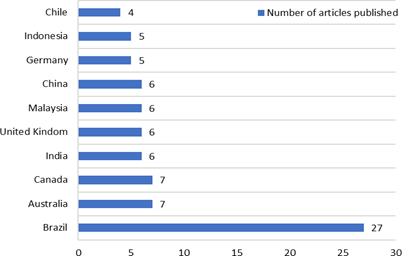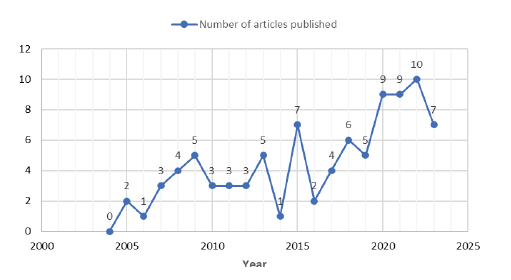Dear Editor,
What should we do when we encounter a measurement instrument that is correctly validated and useful in Dentistry, but was developed in a country with a culture and language different from Peru? This situation poses a significant challenge for researchers, since translation and cultural adaptation can be complex and require careful consideration" researchers, as translation and cultural adaptation can be complex and require careful consideration (1). In some cases, the apparent solution of creating a new instrument can result in an indiscriminate development of instruments, which negatively affects the efficiency and optimization of resources, as well as the comparability of results, maintenance of metric characteristics and the synthesis of evidence (1,2,3,4). This problem raises fundamental questions that require discussion within the dental community. Therefore, the purpose of this letter to the editor is to identify the challenges and benefits associated with conducting studies on translation and cultural adaptation of measurement instruments in this field.
The translation and cultural adaptation of an instrument involve various stages, which include searching for equivalence of concepts and items, having the instrument translated by at least two individuals, synthesizing the translated versions, having the instrument back-translated by two other individuals, synthesizing the back translations, expert committee advising, conducting a pilot study, reviewing observations, investigating operational equivalence, conducting the main study, and performing exploratory and confirmatory analyses (2, 5). This entire process culminates in the creation of the final instrument for use in dental research.
In this regard, based on our experience in research as well as in teaching in research-related subjects and as a thesis advisor (Evaristo-Chiyong) at a dental school in Peru, we have observed a shortage of studies addressing the translation and adaptation of measurement instruments in undergraduate or graduate thesis. This scarcity could be due to the lack of awareness of such research by students and professionals, as well as the challenging perception they may have when starting this line of research.
To identify translation and cultural adaptation studies of measurement instruments related to the field of dentistry, both in Peru and world- wide, we used the following search equation in Scopus: (TITLE-ABS-KEY (“translation" OR "transla- ting" OR "translated”) AND TITLE-ABS-KEY (“cultural adaptation" OR "cross-cultural adaptation”) AND KEY (“Dentistry" OR "Oral health" OR "Dental research”)). AND PUBYEAR > 2003 AND PUBYEAR < 2024 AND (LIMIT-TO (DOCTYPE, "ar”)). A total of 86 articles were identified, with 27 originating from Brazil (Figure 1). Additionally, there was an observed increase in the publication trend from 2004 to 2023, particularly notable in the last decade (Figure 2).
All this poses a series of challenges and benefits that allow for improving the quality of research in dentistry (Table 1), ensuring the validity and reliability of the measurement instruments employed, thereby strengthening the scientific basis of clinical practice and contributing to the advancement of the dental field.

Figure 1 Frequency of translation and cultural adaptation studies of instruments in Dentistry in the top 10 countries with the highest production in Scopus (2004-2023)".

Figure 2 Trend of translation and cultural adaptation studies of instruments in Dentistry during the period 2004-2023.
Table 1 Challenges and benefits associated with the development of translation and cultural adaptation studies of measurement instruments in Dentistry.
| Challenges | Benefits |
|---|---|
| The translation and cultural adaptation of an instrument can require a considerable amount of time for proper completion. | Previous experience in coordinating similar research projects, as well as developing skills to identify and allocate available resources such as time, personnel and funding. |
| The need to pose certified translators, dentists and bilingual community members can present logistical challenges and expenses. | Establish future alliances with certified translators and bilingual dentists to form a diverse and experienced team in the methodology of translating an instrument. |
| Form a multidisciplinary expert committee that includes linguists, psychometrists, dentists with research experience in the subject, and methodologists to carry out the cultural adaptation and subsequent validation of the instrument, which could present a logistical challenge. | Establishment of a committee of experts, with the participation of individuals who contribute significantly to the cultural adaptation and subsequent validation of the instrument, aiming to maximize the validity and reliability of future similar projects. |
| The dentist may face a challenge when using statistical packages such as RStudio and AMOS, as it involves learning to calculate psychometric measures and apply validation techniques, such as exploratory and confirmatory factor analysis, as well as structural equation modeling analysis. Instrument validation research skills are generally not included in the typical training of dentists, necessitating additional training. | Incentivize multidisciplinary collaboration with statisticians and psychometricians, and why not, encourage the training of dentists capable of accurately calculating psychometric measures, conducting exploratory and confirmatory factor analysis, as well as applying structural equation models to examine complex relationships between variables. |















